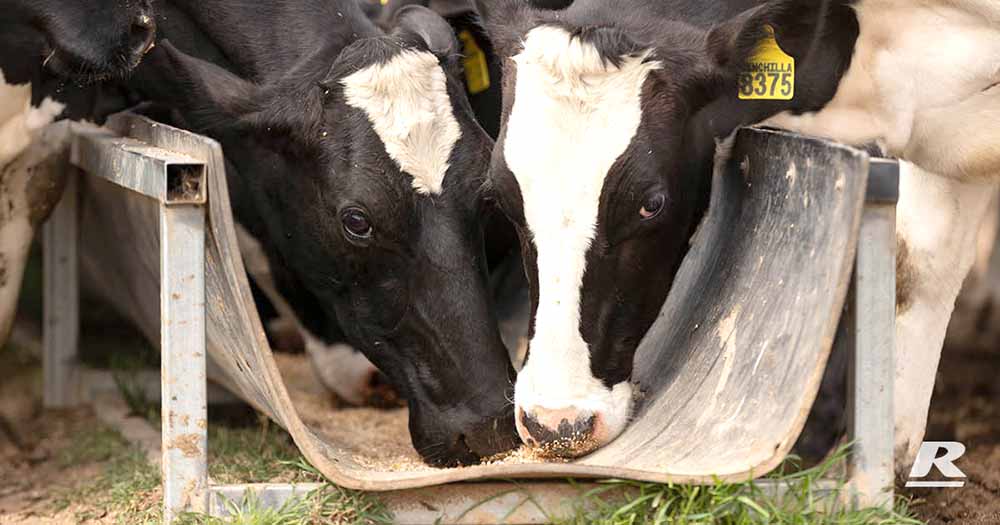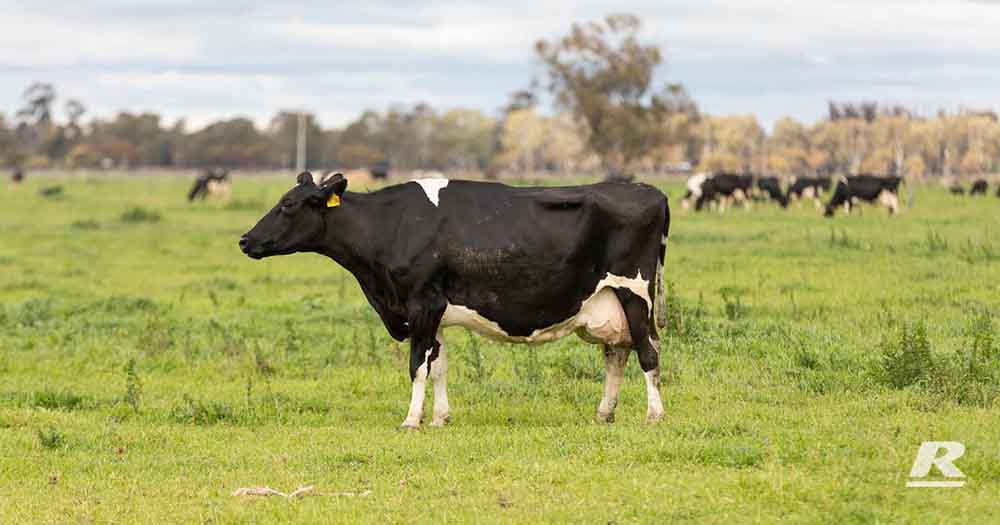The what, how and why of an effective pre-calving diet
A well-planned pre-calving transition diet is crucial for setting the stage for a successful lactation period and overall herd health on any dairy farm. A good pre-calving diet should address the following key considerations:
1. Water Availability
Ensure access to clean and abundant water. Hydration is crucial for maintaining overall health and supporting colostrum production.
2. Energy Balance
Energy demands rise significantly as cows approach calving. Utilize high-energy feeds i.e. grains along with fodder to support the increased energy requirements.
3. Protein Content
Protein is essential for fetal growth, colostrum production, and maintaining the cow’s body condition. Ensure the diet contains adequate levels of high-quality protein and maintain the balance of protein-to-energy ratio to optimize nutrient utilisation.
4. Mineral and Vitamin Supplementation
Special attention must be paid to mineral and vitamin supplementation during the pre-calving period. Calcium, phosphorus, magnesium, and vitamins such as A, D and E are particularly important.
5. Anionic Salts
Anionic salts are the key component of what the Australian dairy industry knows as “Lead Feed”. These salts provide anions (negatively charged ions), such as chloride or sulfate, which can help in managing calcium balance around the time of calving. Benefits of feed anionic salts:
- Prevention of Milk Fever (Hypocalcemia): Anionic salts help in reducing the incidence of milk fever, by creating anionic conditions. This stimulates the cow’s ability to mobilize calcium from bone stores and increase calcium absorption, reducing the risk of milk fever.
- Improved Calcium Homeostasis (balance): Anionic salts promote a negative dietary cation-anion difference (DCAD), which helps maintain proper calcium homeostasis. Proper calcium levels are crucial for muscle function, nerve transmission, and other physiological processes, especially during the transition period.
6. Dry Matter Intake (DMI) Management
It’s common for cows to experience a decrease in feed intake as they approach calving, the above factors can affect and help to mitigate this along with:
- Roughage quality: it is crucial to provide high-quality forages to ensure that cows receive essential fibre for proper rumen function. Monitor forage quality through regular testing. If quality declines the diet must be adjusted accordingly.
7. On-farm Training
It is crucial to have both yourself and your staff trained on the importance of proper feeding practices and livestock management during the pre-calving period. Some key elements of understanding are:
- Body Condition Score (BCS) Management: Adequate body condition is crucial for calving ease, colostrum quality, and subsequent milk production. Adjust the diet if needed to prevent excessive weight loss or gain. Find a link below on understanding BCS
- Reduce Stress: Minimize stressors for pre-calving cows. Changes in diet, grouping, or environment should be minimized during this critical period. Low stock handling methods should be practiced (see link at the end of article)
- Transition to Lactation Diet: Gradually transition cows to between diets in the weeks pre- and post- calving. This helps the rumen adapt to the upcoming changes in nutrient demands.
- Health Monitoring: Regularly monitor the health of late-pregnant cows. Address any signs of illness promptly to ensure a smooth transition to calving.
- Record Keeping: By keeping detailed records of the diet, DMI, BCS’s, and overall health status of individual cows. It helps to make informed decisions on the effectiveness of the pre-calving diet, cow profitability/longevity and staff allowing you to make adjustments as needed.
By implementing the above methods, it will contribute to a more profitable and sustainable dairy operation in achieving:
1. Optimal Body Condition
Optimal BCS in dairy cows pre-calving is 4.5-5.5. Achieving this is important for calving ease, reproductive performance, and overall cow health.
2. Minimized Risk of Metabolic Disorders
Adequate nutrition during the pre-calving period reduces the risk of metabolic disorders such as:
- Hypocalcemia (milk fever) through use of anionic salts.
- Ketosis occurs when cows mobilize excessive body fat for energy. Risk is reduced by supplying adequate energy intake during the pre-calving period.
- Fatty liver syndrome is caused by an excessive accumulation of fat in the liver this impairs liver function which compromises overall cow health. By managing DMI, diet transition, energy intake and BCS in pre-calving and fresh cows we reduce the risk.
3. Smooth Transition to Lactation
A well-designed pre-calving diet helps cows make a smooth transition from the dry period to lactation, minimizing stress and promoting a healthy start to the milking phase.
4. Improved Colostrum Quality
Quality nutrition in the pre-calving period leads to the production of high-quality colostrum which is essential for the health and immunity of the newborn calf.
5. Increased Milk Production
Cows that receive adequate nutrition before calving are more likely to achieve higher milk production levels during lactation.
6. Reduced Calving Difficulties
Correct nutrition supports the development of a healthy and appropriately sized calf, reducing the risk of calving difficulties and dystocia. The use of anionic salts, energy-protein balance and mineral nutrition.
7. Healthy Rumen Function and Mammary Gland Development
A good pre-calving diet promotes healthy rumen function and mammary gland development. Creating efficient digestion and nutrient absorption, and a healthy mammary gland. We lay the foundation for efficient milk production.
8. Reduced Incidence of Retained Placenta and Faster Uterine Involution
Adequate nutrition helps reduce the likelihood of retained placenta and speeds up uterine involution this reduces post-calving complications.
9. Optimised Immune Function
Proper mineral balance and energy-protein balance reduces the vulnerability of cows to infections and other health issues during the critical transition period.
10. Improved Fertility and Reproductive Performance
Increased likelihood of successful breeding and conception in the subsequent breeding cycle can be aided through effective nutrition in the transition period.
11. Enhanced Dry Matter Intake
Maintaining a stable dry matter intake is essential for meeting energy and nutrient requirements during the transition period.
Reid Stockfeeds have a range of pre-calving feeds available including but not limited to Springer 16 (3kg feed rate), Springer 20 and Springer 24 (4-5kg feed rate). For more info on these products click here.
To find out more about the best animal feed or health management strategy for your herd, give us a call and have a chat to one of our nutritionist on 1300 REID FEED or enquire here >
Author
Tom Fitzgerald
Sales & Nutrition Account Manager
Links to help with article learnings:

